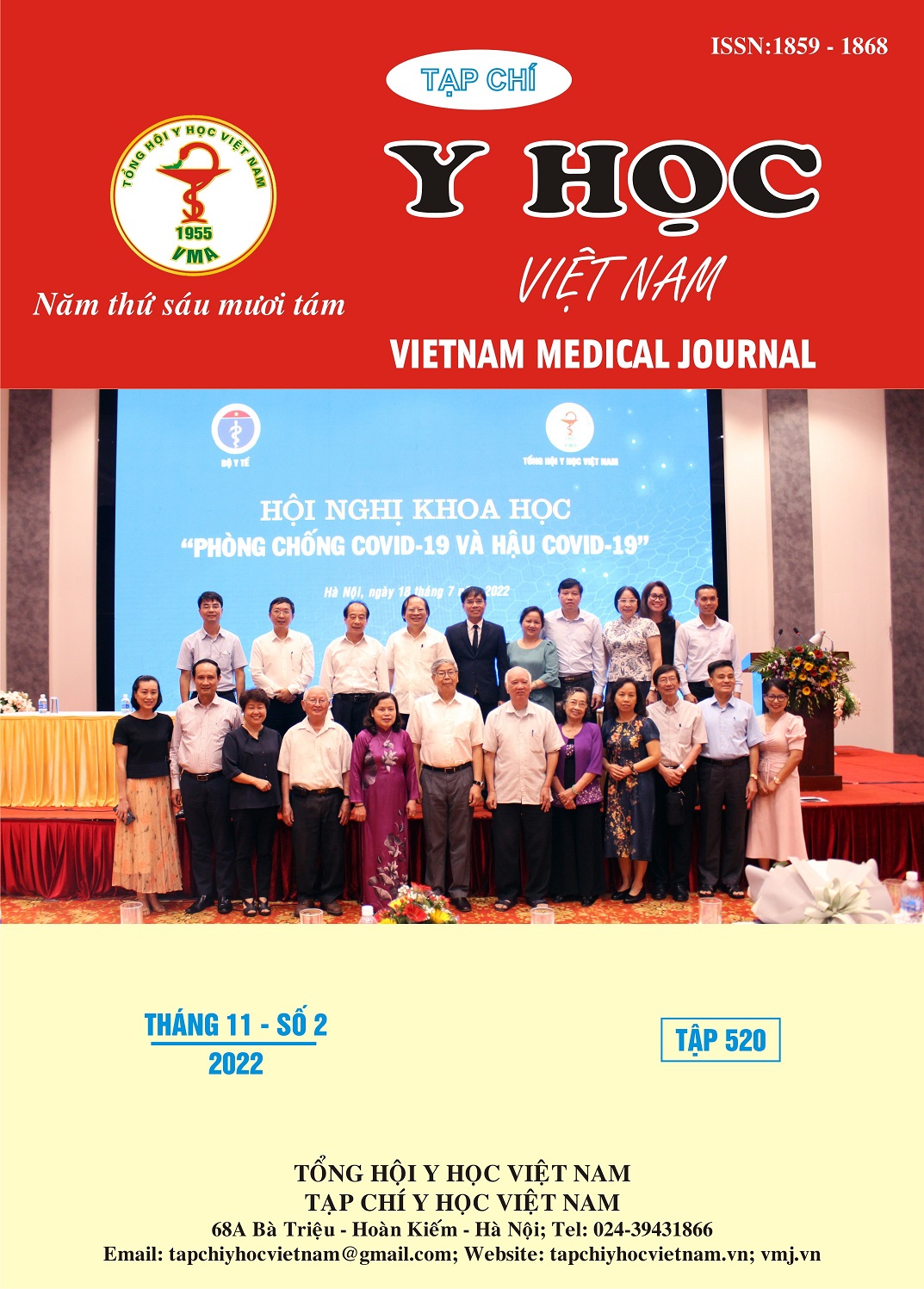THE RESEARCH AND APPLICATION OF DUAL ENERGY COMPUTED TOMOGRAPHY IN THE ASSESSMENT OF LUNG CANCER
Main Article Content
Abstract
Purpose: Study on the value of virtual non contrast images (VNC) of DUAL Energy computed tomography (DECT) in assessment lung cancer. Compare the difference in image image quality of lung cancer lesions on DECT of virtual monochromatic and mixed images. Compare the difference of radiation dose in patient between DECT and Standard Dose Computed (SDCT). Materials and Methods: We conducted a cross sectional descriptive study in 50 patients diagnosed lung cancer with dual energy CT of thoracic venous phases at K Central Hospital from 03/2022-08/2022. Process the Data File into a composite image that corresponds to conventional CT at 66 keV, virtual non contrast and monochromatic images with the energy range from 40 keV to 140 keV. Compare virtual non contrast images with the true non contrast images (TNC) and evaluate the quality of monoenergetic images. Results: The study was composed of 50 patients (40 males, 10 females). The mean age of patients was 57.12±11.92. Contrast noise ratio of lung tumor has the highest value in monochromatic image at 40 keV (2.57±0.37), 60 keV (1.71±0.34) higher than mixed image at 66 keV (0.71±0.41). The subjective assessment comparing the series of monochrome images with the composite images showed the highest image quality score at 60 keV (4.54±0.5) and was not significantly different with mixed image (4.42±0.67) (p=0.135). ). The density of lung tumors of TNC is 42.63±8.83 and VNC images is 43.64±9.55 (p=0.126), the contrast to noise ratio value of TNC is 0.76±0.34 and VNC is 0.71±0.3 (p= 0.14), the image quality score of TNC is 4.48±0.68 and VNC is 4.12±0.63 (p<0.005). The total effective radiation dose for patients with DECT technique was 3.2±0.48 mSv lower than SDCT technique was 7.2±2.03 mSv. Conclusion: Virtual non contrast images can completely replace the role of true non contrast images in lung cancer assessment. The can reduce up to 55.56% effective radiation dose for patinents. In virtual monoenergetic, the 60-80 keV sequence has good image quality, the 60 keV sequence can highlight the lung tumor lesion and the image quality is better than other monoenergetic sequence and the mixed images.
Article Details
Keywords
Lung cancer, Dual energy CT, virtual non contrast, virtual monochromatic
References
2. Zhang L.J., Yang G.F., Wu S.Y. và cộng sự. (2013). Dual-energy CT imaging of thoracic malignancies. Cancer Imaging, 81–91.
3. Baxa J., Vondráková A., Matoušková T. và cộng sự. (2014). Dual-phase dual-energy CT in patients with lung cancer: assessment of the additional value of iodine quantification in lymph node therapy response. Eur Radiol, 24(8), 1981–1988.
4. Zegadło A., Żabicka M., Kania-Pudło M. và cộng sự. (2020). Assessment of Solitary Pulmonary Nodules Based on Virtual Monochrome Images and Iodine-Dependent Images Using a Single-Source Dual-Energy CT with Fast kVp Switching. J Clin Med, 9(8), 2514.
5. Kozu Y., Maniwa T., Takahashi S. và cộng sự. (2013). Prognostic significance of postoperative serum carcinoembryonic antigen levels in patients with completely resected pathological-stage I non-small cell lung cancer. J Cardiothorac Surg, 8, 106.
6. D’Angelo T., Cicero G., Mazziotti S. và cộng sự. (2019). Dual energy computed tomography virtual monoenergetic imaging: technique and clinical applications. Br J Radiol, 92(1098), 20180546.
7. Kaup M., Scholtz J.-E., Engler A. và cộng sự. (2016). Dual-Energy Computed Tomography Virtual Monoenergetic Imaging of Lung Cancer: Assessment of Optimal Energy Levels. Journal of Computer Assisted Tomography, 40(1), 80–85.
8. Goldman L.W. (2007). Principles of CT: radiation dose and image quality. J Nucl Med Technol, 35(4), 213–225; quiz 226–228.


